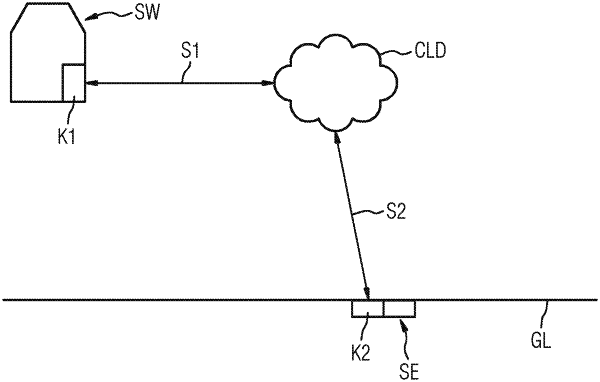| CPC H04W 56/001 (2013.01) [G06F 9/30043 (2013.01); H04J 3/0658 (2013.01); H04L 43/0858 (2013.01); H04L 43/16 (2013.01); H04N 21/4341 (2013.01)] | 15 Claims |

|
1. A method for computer-assisted monitoring of a first time basis of a first communications facility and a second time basis of a second communications facility, the method comprising:
in a first sequence, carrying out at least three measuring steps, with each measuring step including:
at a first instant, which is based on the first time basis, sending a first message from the first communications facility to the second communications facility;
at a second instant, which is based on the second time basis, receiving the first message by the second communications facility;
at a third instant, which is based on the second time basis, sending a second message from the second communications facility to the first communications facility; and
at a fourth instant, which is based on the first time basis, receiving the second message by the first communications facility; and
determining from the first instant, the second instant, the third instant, and the fourth instant a time delay interval in which a time delay can lie between the first time basis and the second time basis;
in a second sequence, for an earlier measuring step and a later measuring step, and multiple times:
ascertaining a maximum possible drift in a time between the earlier measuring step and the later measuring step by taking into account a lower limit of the time delay interval for the earlier measuring step and an upper limit of the time delay interval for the later measuring step;
ascertaining a minimum possible drift in the time between the earlier measuring step and the later measuring step by taking into account an upper limit of the time delay interval for the earlier measuring step and a lower limit of the time delay interval for the later measuring step; and
while taking into account a maximum possible drift, calculating an upper limit and, while taking into account a minimum possible drift, calculating a lower limit of a drift interval, within which a relative drift describing a change over time in the time delay can lie; and
in a third sequence, for a plurality of drift intervals:
setting a lowest upper limit as the upper limit of a resulting drift interval for the relative drift; and
setting a highest lower limit as the lower limit of the resulting drift interval for the relative drift.
|